Your Back Pain May Actually Be Caused by Uneven Hips — And These Exercises Can Help
Most of us are no strangers to back pain, and the causes of the ache are many and varied. But one sneaky underlying trigger may have nothing to do with the back at all: Uneven hips, or uneven legs. Here, discover what it means to have uneven hips, how the incredibly common condition can cause pain and discomfort, plus five uneven hips exercises that help banish pain for good.
What are uneven hips?
“Uneven hips or uneven legs means that there is a real or perceived discrepancy in one’s leg lengths,” explains Brett Hayden, MD, Assistant Professor of Orthopaedic Surgery at the Icahn School of Medicine at Mount Sinai in New York. In other words, one leg is measurably longer than the other — or one leg feels longer than the other.
The cause? It's simply how you were born. “The asymmetry is purely developmental and is influenced by both genetics and the intrauterine environment/fetal positioning during pregnancy,” says Tigran Garabekyan, MD, an orthopedic surgeon and owner of the Southern California Hip Institute in Los Angeles, CA.
This results in one of two physical causes of uneven hips. “Probably the most common cause is a subtle curvature of the back, or scoliosis, that is not even noticeable to the patient,” Dr. Hayden says. “This will cause the pelvis to be tilted to one side and give the impression that one leg is longer than the other, which is known as pelvic obliquity. But if we were to actually measure the leg lengths, the legs would be the same length as each other.”
The second reason is that one leg really is physically longer than the other. Dr. Hayden says that this extra length is typically found in the proximal femur, or the very top of the thigh bone that is connected with the hip joint.
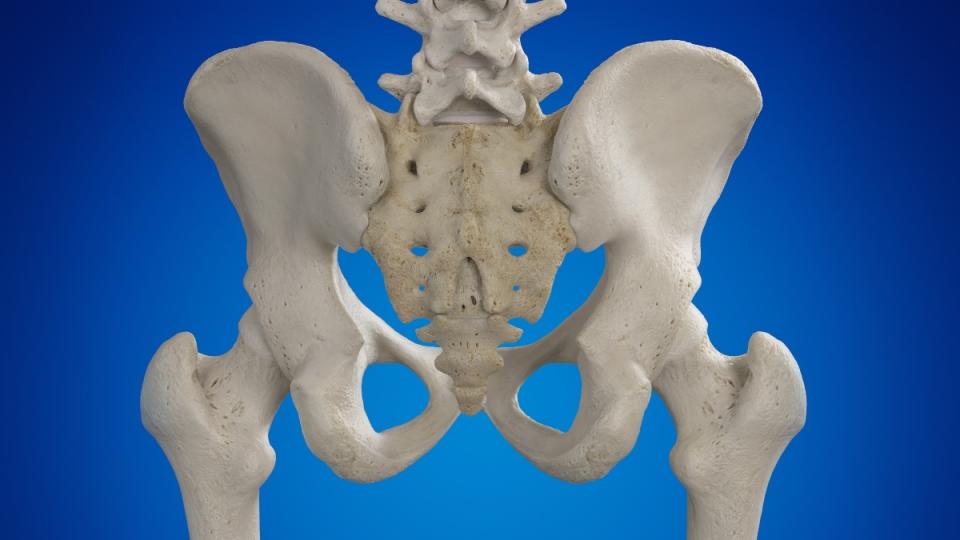
How to test for uneven hips
If it feels like you may have uneven hips or uneven legs, Dr. Garabekyan recommends this simple test:
“Lie down on your back on a hard, non-carpeted floor," he says. "Scoot down against a wall such that your buttocks are on the baseboard and hips are bent at 90 degrees with legs running up the wall. Then, have someone mark the height of each heel with tape on the wall. You can then measure the difference between the height of the pieces of tape as the unevenness of your hips.” If the difference between the height of the pieces of tape is more than an inch, your hips are significantly uneven.
Uneven hips are more common than you might think
“Small asymmetry, less than half an inch, is very common and I would estimate that upwards of 75% of the population has some degree of asymmetry,” Dr. Garabekyan says. Dr. Hayden agrees, noting that most people never even realize that they have uneven hips or uneven legs since the difference is so minor.
But slight discrepancies that may be unnoticeable for years can worsen with age. “As patients age, there is a degeneration in the lower back, the lumbar spine, and the hip joints. As the lumbar spine degenerates, small curves, or mild scoliosis, can worsen, making the pelvic obliquity worse,” explains Dr. Hayden. This means that the pelvis can become more tilted, causing you to feel a leg length discrepancy more acutely.
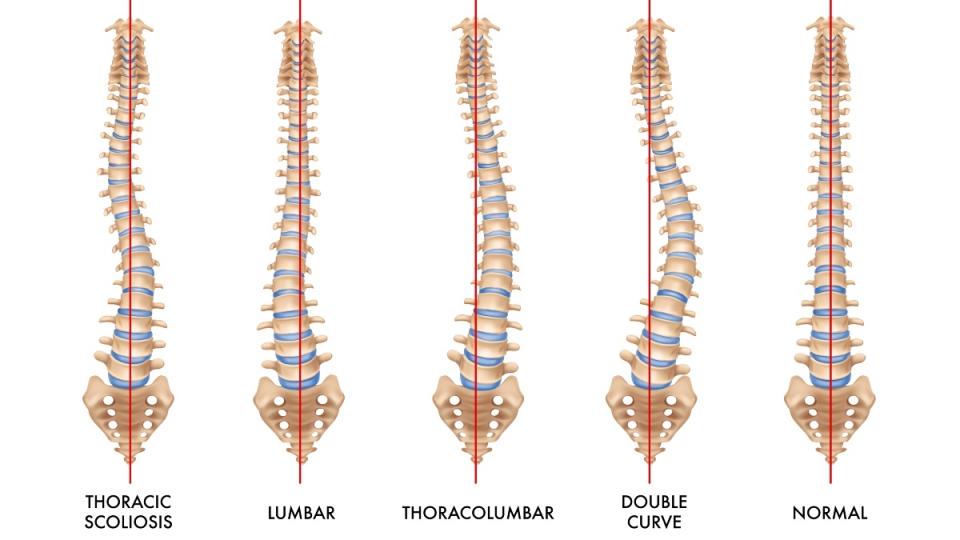
“Similarly, as patients age, hip osteoarthritis may worsen thereby making the leg length discrepancy more pronounced,” Dr. Hayden adds. “There can be cartilage wear in one hip more so than the other, which will cause the joint space to be more narrow and thus, the leg shortens through the hip.” Considering that 8% of Americans, or 26.5 million people, have hip arthritis, according to research in the journal Arthritis Research & Therapy, this can become a common problem as we age. (Click through to learn how a walking asymmetry can cause also cause back pain and how to pop your lower back for pain relief.)
How uneven hips cause pain
Pain from uneven hips becomes a possibility as the difference gets bigger. “If there is a large asymmetry, greater than one inch, this can put undue stress on the joints of the vertebrae — particularly in older individuals who already have natural degeneration in this region,” Dr. Garabekyan says. Most people actually feel this pain in their lower back, since degeneration in the lower spine is one of the primary causes. But it may also be manifest as pain in the hips, knees, or ankles. Luckily, uneven hips exercises can help.
5 uneven hips exercises that ease pain
“Small uneven hips do not require any formal treatment," says Dr. Garabekyan. "But it’s a good idea to engage in core and paraspinal muscle strengthening exercises to keep the junction between the spine and pelvis strong and healthy. These can help keep the core strong and prevent any negative downstream effects from larger degrees of uneven hips.” Try these five expert-recommended uneven hips exercises to outsmart pain for good.
1. Basic crunches for uneven hips
Lie on your back on a mat or soft surface and bend your knees so that your feet are flat on the floor. Place your hands behind your head with your elbows pointing out to the sides (avoid pulling on your head or neck). Engage your abs and curl your chest and shoulder blades off the ground, keeping your lower back pressed into the ground. Then lower back down. Repeat 15 times.
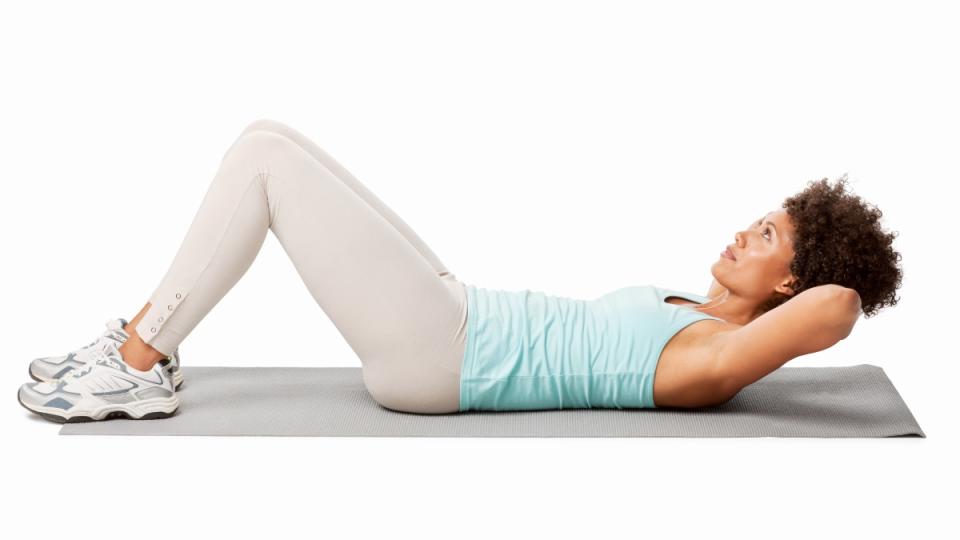
2. Supermans for uneven hips
Lie face-down on your stomach on a mat or soft surface, then extend your arms over your head. Lift your right arm and left leg at the same time, reaching out with both to lengthen your body. Hold for 10-15 seconds, then lower and repeat on the other side. Repeat both sides 5 times. If you can, you can also try to lift both arms and both legs at the same time.
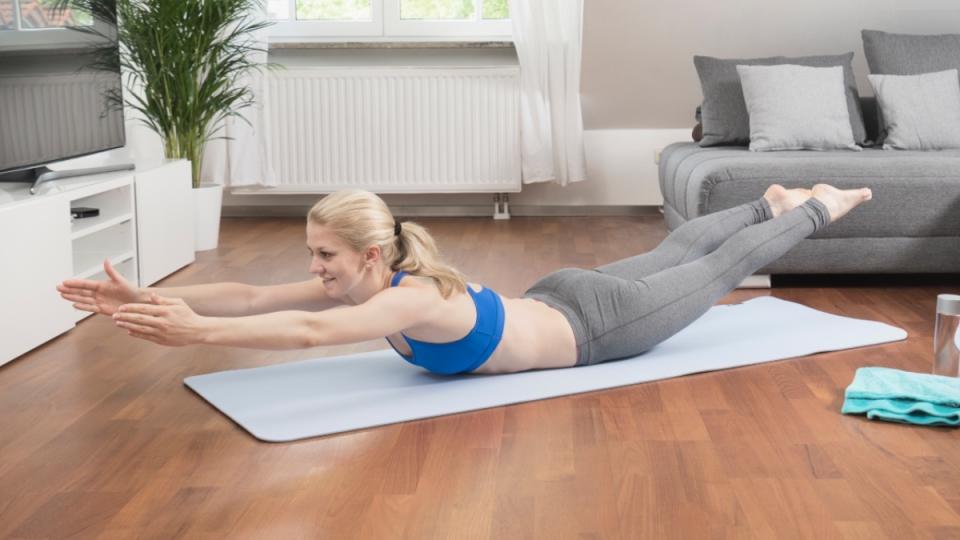
3. Pole presses for uneven hips
Lie on your back on a mat or soft surface and bend your knees so that your feet are flat on the floor. Lift your right leg off the floor and slide a pole, such as a broom, behind your right knee. While holding the pole on each end, lift your left leg off the ground so that the pole is resting on top of your left thigh. Press both legs against the pole. Hold for 10 seconds, then release. Repeat five times. Switch legs and repeat on the other side. For a quick how-to, check out the video below.
4. Knees-to-fists squeezes for uneven hips
Lie on your back on a mat or soft surface and bend your knees so that your feet are flat on the floor. Lift both feet off the ground. Make fists with both hands, place them side by side, then place your fists between your knees. Press your knees toward one another, into your fists. Hold for 10 seconds, then release. Repeat five times. Tip: This move is also demonstrated in the video above. As an alternative, you can try this exercise from a seated position as illustrated in the video below.
5. Bird-dogs for uneven hips
Position yourself on the ground on all fours with your hands under your shoulders and your knees under your hips. Extend your right arm forward and your left leg back simultaneously, creating a straight line from your fingertips to your toes that is parallel to the floor. Hold for 10 seconds, then release. Repeat on the other side. Repeat both sides 5 times.
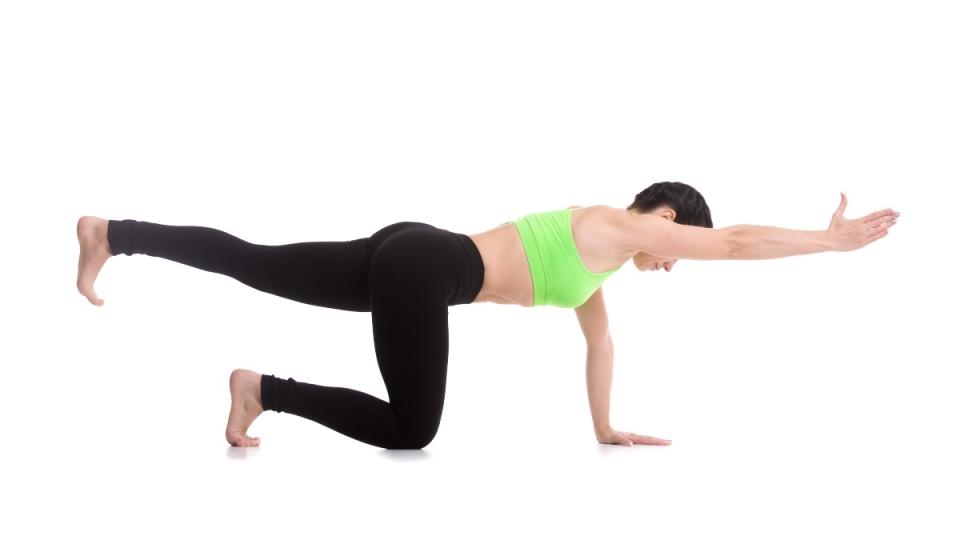
Need extra help? Consider shoe inserts
If your uneven hips become noticeable or start to cause pain that is not relieved by the exercises above, adding a small insert to your shoe can be helpful. “You can go to an orthotics store or a physical therapy office and have them measure you by having you stand on progressively taller blocks with your shorter leg until your hips appear even,” notes Dr. Garabekyan. “It may be a good idea to insert a heel lift in the shoe of the shorter side to normalize the inequality.”
You don’t want to reverse the discrepancy with a lift that’s too high, so it’s a good idea to see an in-store or in-office specialist who can advise you on the size of the lift. (If it's your feet bothering you rather than your back, click through to see the best insoles for plantar fasciitis and other foot bothers.)
For more ways to outsmart back pain:
Pain Doctors Share Natural Ways to Dodge Lower Back Pain When Walking
This content is not a substitute for professional medical advice or diagnosis. Always consult your physician before pursuing any treatment plan.
Solve the daily Crossword

